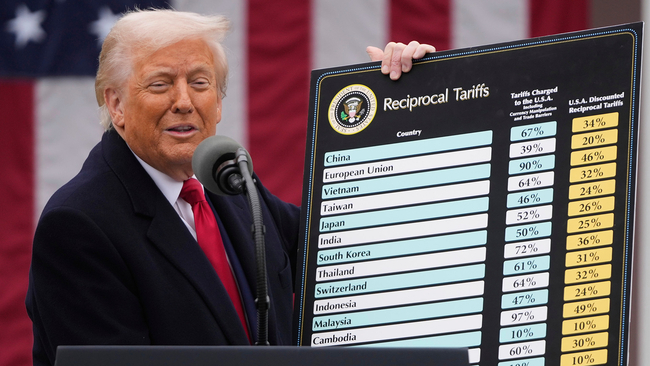Earlier this month, U.S. President Donald Trump claimed that his tariff policies were bringing in “$2 billion a day” in revenue. However, data from the U.S. Department of Commerce tells a different story. As of April 25, the most recent figures show that daily tariff revenue reached $285 million — a far cry from Trump’s figure. For context, on the last day of the Biden administration in January, the US collected $128 million in tariffs. April’s total so far stands at $16.1 billion.
The sharp rise in revenue can be traced back to Trump’s reimposition of aggressive tariffs — especially a 10 percent blanket levy on all imports (excluding China) and heightened duties on autos, steel, aluminum, and potash. China, which Trump accused of flooding the US with fentanyl, faced a combined tariff rate of up to 125 percent.
Trade Wars on All Fronts
Trump’s moves have reignited trade tensions globally. China quickly retaliated with tariffs of its own — also reaching 125 percent on some American goods. Although both sides have since taken limited steps to ease tensions — the US exempted some Chinese electronics, and China is reportedly considering similar exemptions — the broader effects are already rippling through the economy.
Meanwhile, Trump has promised relief for automakers by eliminating certain overlapping tariffs, such as those on aluminum and steel, and has pledged reimbursements for previously paid levies.
Consumers and Companies Start to Feel the Strain
Experts warn that these tariffs may soon hit American consumers hard. According to Yale’s Budget Lab, the average US tariff rate has surged to 28 percent — the highest in over 100 years. Prices are already inching up, and consumer behavior is shifting. The Commerce Department reported a 1.4 percent increase in spending last month, which economists link to people stocking up before new price hikes.
The University of Michigan’s Consumer Sentiment Index, a key measure of public confidence, fell 11 percent in March. The Conference Board also reported a drop in consumer confidence, marking a 12-year low.
Jobs at Risk at Home and Abroad
The economic fallout is not limited to consumers. US companies are already cutting jobs in response to the tariff environment. This month alone, Stellantis laid off 900 workers, General Motors let go of 200, and Volvo announced 800 US job cuts.
Yale estimates that tariffs could eliminate 770,000 jobs in the US by year’s end.
Globally, the effects are similarly severe. South Africa’s citrus industry warns of losing 35,000 jobs, Ireland’s pharmaceutical sector could shed 80,000 roles, and Mexico fears up to 400,000 job losses due to reduced trade with the US.
As tariffs tighten their grip, both Wall Street and Main Street are bracing for what comes next.






